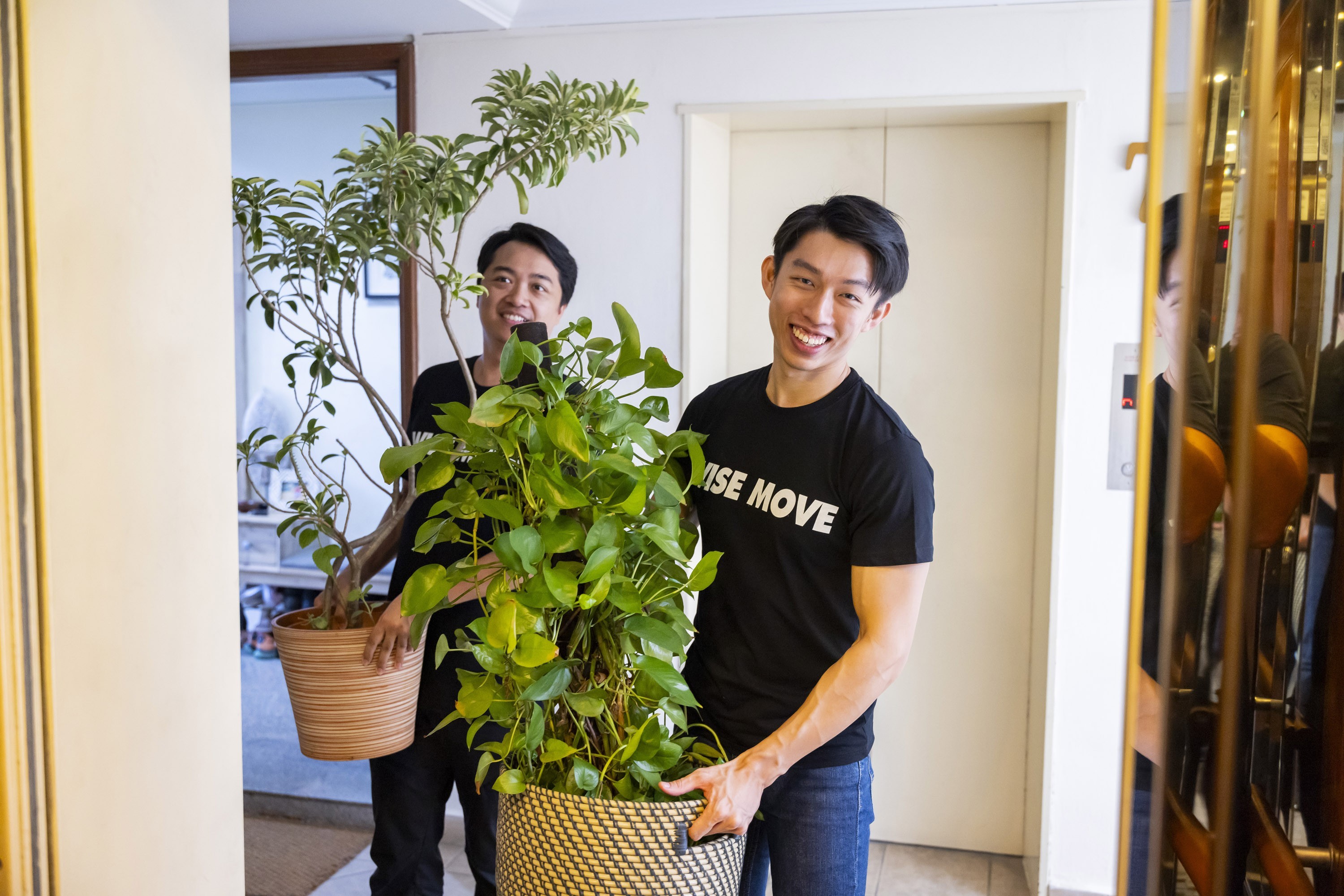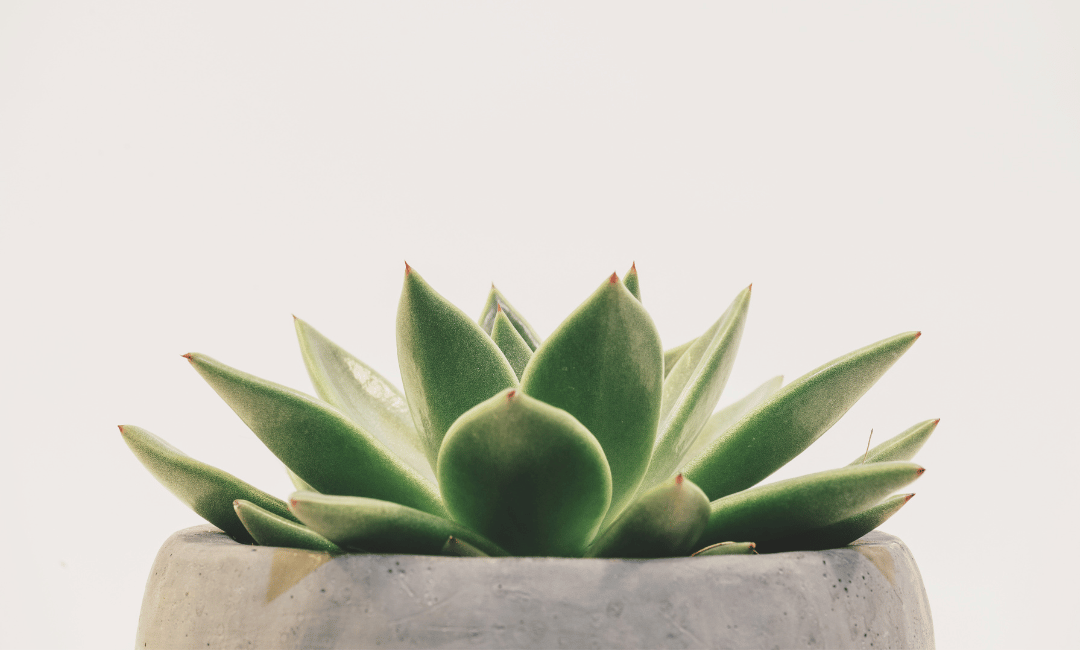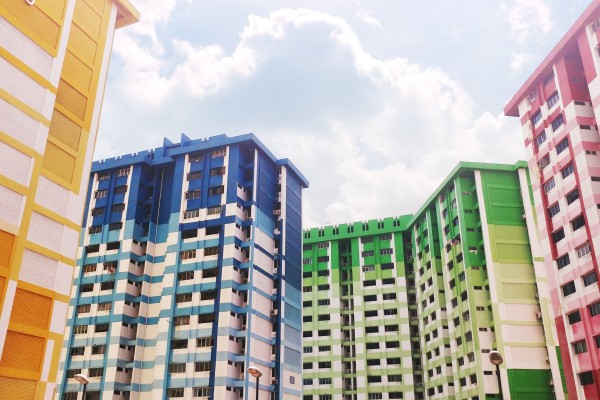Best Indoor Plants To Add Life To Your Abode

A study revealsthat indoor plants not only enhance cognitive function and mood but are also knights in shining armour, combatting indoor pollutants like volatile organic compounds (VOCs). It's about transforming your abode into a sanctuary of lush tranquillity amidst the urban chaos.
In this guide, we'll unveil:
-
Hand-picked recommendations for the best indoor plants that are more than just green decor.
-
The undeniable benefits of sharing your space with these leafy companions.
-
Pro-tips on nurturing your indoor garden.
-
Trusted destinations to adopt your green buddies.
-
Inspiring ideas to blend these natural elements seamlessly into your home aesthetics.
P.S. Speaking of nurturing, our journey of transforming mundane chores into delightful experiences doesn't end at indoor gardening. Wise Move echoes a similar sentiment in making heavy item moves in Singapore a breeze.
We bridge the gap between customers and moving professionals, ensuring a smoother transition for your prized possessions. Whether it’s a colossal couch or a delicate indoor plant, moving is no longer a daunting task but a Wise Move.
Unearth a Green Sanctuary: Top Indoor Plants
Indoor plants are more than just pleasing aesthetics or a mere embellishment to your decor. They're silent companions that have a way of making a space feel warm, inviting, and alive. They hum the songs of nature right into your living room, teaching patience and nurturing one day at a time.
#1. Snake Plant: The Silent Guardian

The snake plant, with its upright sword-like foliage, is more than just a stylish statement. It's known for its hardiness and ability to thrive in less-than-ideal conditions. This easy-going plant isn't finicky about light and doesn't demand constant attention, making it a perfect choice for both seasoned gardeners and green-thumb novices.
Its ability to purify indoor air by removing toxins like formaldehyde and benzene is a significant added advantage. The snake plant embodies a blend of aesthetic appeal, air-purifying attributes, and low-maintenance care, making it a quintessential indoor plant. It's a silent guardian that continues to contribute positively to your indoor environment, even when the lights go out.
-
Sun Exposure: Low to bright indirect light
-
Water pH: Slightly acidic to slightly alkaline (6.1 to 7.5)
-
Helpful Tip: Allow the soil to dry out between waterings to prevent root rot.
-
Size: Up to 2-3 feet indoors
-
Fertilize: During the growing season, a balanced liquid slow-release fertilizer every 4-6 weeks is sufficient.
#2. Pothos: The Cascading Charm

Pothos, with its cascading vines and heart-shaped leaves, often evokes a sense of graceful descent in green. It's a versatile plant that can adapt to a variety of indoor environments. With the ability to thrive even under fluorescent light, it's a common choice for office spaces or parts of your home that don't receive a lot of natural light.
The ease of care combined with its air-purifying properties makes Pothos a beloved choice among plant enthusiasts. This plant doesn't just add a touch of nature to your space; it's a living decor that actively contributes to making your indoor environment healthier.
-
Sun Exposure: Low to moderate indirect light
-
Water pH: Slightly acidic to slightly alkaline (6.1 to 7.5)
-
Helpful Tip: Trim the vines if they get too long, or propagate them to have more Pothos plants around.
-
Size: Vines can reach up to 10 feet indoors
-
Fertilize: A balanced liquid fertilizer every 4-6 weeks during the growing season.
#3. Spider Plant: The Air-Purifying Star

The spider plant, with its arching leaves and baby spiderettes, adds a quirky charm wherever it resides. This plant is famed not only for its unique appearance but also for its remarkable air-purifying abilities. It can filter out harmful substances from the air like benzene, formaldehyde, and xylene, making your indoors a safer place to breathe.
The spider plant is forgiving in nature, tolerating a fair amount of neglect, and is also pet-friendly, which is a sigh of relief for pet owners. Its cascading nature makes it an excellent choice for hanging baskets, adding a different level of green to your decor.
-
Sun Exposure: Bright indirect light
-
Water pH: Slightly acidic to neutral (6.0 to 7.0)
-
Helpful Tip: Ensure good drainage to prevent waterlogging and root rot.
-
Size: Up to 2 feet in width and length
-
Fertilize: A general-purpose liquid fertilizer every 4-6 weeks during the growing season.
#4. Peace Lily: The Blooms of Serenity

The Peace Lily isn’t just a gentle beauty but a vigilant guard against indoor air pollutants. Its elegant white blooms, contrasting against dark green foliage, make a serene yet bold statement.
Known for its air-purifying capabilities, it removes toxins like benzene, formaldehyde, and trichloroethylene from the surroundings. Despite its delicate appearance, it's quite forgiving and alerts you when it's thirsty by a gentle droop.
The Peace Lily is more than just a plant; it’s a symbol of peace and purity, an emblem of nature’s quiet, nurturing way.
-
Sun Exposure: Low to moderate indirect light
-
Water pH: Slightly acidic to neutral (6.0 to 7.0)
-
Helpful Tip: Wait for the leaves to droop slightly before watering, it's their way of asking for a drink.
-
Size: Up to 3 feet tall and wide
-
Fertilize: Balanced liquid fertilizer every 6-8 weeks during the growing season.
#5. Aloe Vera: The Healing Sage

Aloe Vera is a plant of many virtues. Its succulent leaves hold a gel known for its medicinal and skin-soothing properties. This humble plant is not just a healer but also a hero in purifying the indoor air.
It’s a breeze to care for, requiring minimal attention, and in return, it offers a plethora of benefits. Aloe Vera stands as a testament to the symbiotic relationship humans can have with the plant kingdom— a touch of care in exchange for a touch of cure.
-
Sun Exposure: Bright, indirect light to full sun
-
Water pH: Neutral to slightly alkaline (7.0 to 8.5)
-
Helpful Tip: Allow the soil to dry thoroughly between waterings to prevent root rot.
-
Size: Up to 2 feet tall
-
Fertilize: Balanced liquid fertilizer once a month during the growing season.
#6. Succulents: The Desert Dwellers

Succulents bring a snippet of the desert's resilient beauty into your home. Their varied shapes, sizes, and hues offer a delightful visual treat, making them a modern decor staple. Succulents store water in their leaves, stems, or roots, which sees them through dry spells, embodying self-sufficiency.
They’re like little green sculptures adorning your space, each with a character and charm of its own. Their low-maintenance nature makes them a popular choice for busy individuals, offering a blend of aesthetic allure and easy care.
-
Sun Exposure: Bright, indirect light to full sun
-
Water pH: Slightly acidic to slightly alkaline (6.0 to 7.5)
-
Helpful Tip: Use a well-draining soil mix to prevent waterlogging and root rot.
-
Size: Varies greatly by type, from 1 inch to over 2 feet
-
Fertilize: A balanced, water-soluble fertilizer diluted to half strength every 4-6 weeks during the growing season.
#7. Fiddle Leaf Fig: The Leafy Luxe

The Fiddle Leaf Fig, flaunting its bold, glossy foliage, has become synonymous with contemporary indoor plant decor. Its large, violin-shaped leaves make a dramatic statement, embodying a blend of sophistication and the wild.
While it seeks a bit more attention compared to its other leafy comrades, the aesthetic payoff is well worth it. It's a living piece of art, transforming any space into an elegant green haven with a touch of the tropics.
-
Sun Exposure: Bright, indirect light
-
Water pH: Slightly acidic to neutral (6.0 to 7.0)
-
Helpful Tip: Rotate your plant every few months to ensure even growth and prevent it from leaning towards the light.
-
Size: Up to 6 feet indoors
-
Fertilize: Balanced liquid fertilizer every month during the growing season.
#8. Rubber Plant: The Resilient Aesthete

Rubber plants are a stately choice for the indoor plant enthusiast. With its thick, glossy leaves and upright growth, it adds a touch of majestic greenery to any space. Its ability to tolerate less-than-ideal conditions like dim light and infrequent watering makes it a hearty companion. The rubber plant isn’t just about aesthetics; it’s a silent warrior against indoor air pollutants, making it as useful as it is beautiful.
-
Sun Exposure: Bright, indirect light
-
Water pH: Slightly acidic to neutral (6.0 to 7.0)
-
Helpful Tip: Wipe the leaves with a damp cloth to keep them dust-free and glossy.
-
Size: Up to 8 feet indoors
-
Fertilize: Balanced liquid fertilizer every 4-6 weeks during the growing season.
#9. English Ivy: The Vintage Veil

English Ivy, with its classic appeal, brings a touch of timeless beauty to your indoors. Its trailing vines adorned with small, lobed leaves create a green veil that can grace the shelves or hang down elegantly from hanging basket.
Besides being a visual delight, English Ivy is renowned for its air-purifying abilities, especially in eliminating airborne mold and fecal-matter particles. It’s not just a plant; it’s a piece of living history adding charm and clean air to your home.
-
Sun Exposure: Bright, indirect light
-
Water pH: Slightly acidic to neutral (6.0 to 7.0)
-
Helpful Tip: Keep it in a cooler environment with air circulation to prevent pests.
-
Size: Vines can trail up to several feet indoors
-
Fertilize: Balanced liquid fertilizer every month during the growing season.
#10. Monstera Deliciosa: The Tropical Statement

Monstera Deliciosa, often known as the Swiss Cheese Plant due to its unique holey leaves, is a bold choice for indoor gardeners. It brings a lush, tropical vibe to any room, turning it into a verdant paradise.
Its large, split leaves make a dramatic statement, and as it grows, it becomes a conversation starter. Monstera is more than just a pretty face; it's a slice of the wild, bringing a sense of adventure and allure to your indoor space.
-
Sun Exposure: Bright, indirect light
-
Water pH: Slightly acidic to neutral (6.0 to 7.0)
-
Helpful Tip: Provide a moss pole or trellis to support its climbing habit.
-
Size: Up to 8 feet tall indoors
-
Fertilize: Balanced liquid fertilizer every 4-6 weeks during the growing season.
#11. ZZ Plant: The Indestructible Gem

ZZ Plant, with its glossy, dark green leaves, is often dubbed as nearly indestructible. It's a gem for those who possess a busy schedule yet desire a touch of nature indoors. Its ability to thrive in low light and tolerate drought makes it a hardy choice. The Z.Z. plant doesn’t just blend with your decor; it celebrates resilience, standing tall, and elegant even when neglected, a true embodiment of beauty in toughness.
-
Sun Exposure: Low to bright indirect light
-
Water pH: Neutral (7.0)
-
Helpful Tip: Err on the side of underwatering; it's better than over-watering for the ZZ Plant.
-
Size: Up to 2-3 feet tall
-
Fertilize: Balanced liquid fertilizer once every 6-8 weeks during the growing season.
#12. Dracaena: The Dragon Whisperer

Dracaena, often referred to as Dragon Trees, bring a dramatic flair to your indoor greenery with their long, slender leaves sprouting from wooden stems. They are relatively easy to care for and are known for their ability to purify the air from harmful toxins, making your home both beautiful and safe.
Their varied species offer a range of colours and forms, adding a vibrant splash to your indoor palette. Dracaena is more than just a plant; it's a whisper of the wild, a soft murmur of the ancient woods right in your living space.
-
Sun Exposure: Bright, indirect light
-
Water pH: Slightly acidic to neutral (6.0 to 7.0)
-
Helpful Tip: Avoid using fluoridated water, as Dracaena is sensitive to fluoride.
-
Size: Up to 6 feet indoors
-
Fertilize: Balanced liquid fertilizer every 4-6 weeks during the growing season.
#13. Cactus: The Desert Darling

Cacti are the epitome of resilience and enduring beauty in the plant kingdom. Their unique shapes, sizes, and blooms bring a slice of the desert's mystique into your home.
Being drought-tolerant, they require minimal watering and care, making them a fuss-free companion. They stand as a daily reminder of nature's ability to thrive even in harsh conditions, offering a distinct aesthetic and a lesson in resilience.
-
Sun Exposure: Bright direct light
-
Water pH: Slightly acidic to slightly alkaline (6.0 to 7.5)
-
Helpful Tip: Ensure your cactus is potted in well-draining soil to prevent waterlogging.
-
Size: Varies greatly by species, from a few inches to several feet
-
Fertilize: Balanced liquid fertilizer diluted to half strength every 8-10 weeks during the growing season.
#14. Boston Fern: The Feathery Friend

Boston Ferns are a classic choice when it comes to indoor gardening. With their delicate, feathery fronds, they bring a touch of elegance and a fresh, airy feel to any space.
They are known for their air-purifying qualities and ability to add humidity to the indoor environment. These feathery friends offer a soothing green vista, helping to create a calm and relaxing ambience.
-
Sun Exposure: Bright, indirect light
-
Water pH: Slightly acidic to neutral (6.0 to 7.0)
-
Helpful Tip: Keep the soil moist, but not soggy, and provide some humidity to keep them happy.
-
Size: Up to 2-3 feet wide and tall
-
Fertilize: Balanced liquid fertilizer every 4-6 weeks during the growing season.
#15. Calathea: The Living Art

Calathea plants, with their intricately patterned leaves, are like living pieces of art. They are known for their fascinating feature of opening and closing their leaves with the sun, often referred to as the “living plant” due to this unique behaviour.
Besides being a visual delight, Calathea is a symbol of a lively, vibrant space, embodying the essence of an ever-evolving, ever-moving life.
-
Sun Exposure: Low to medium indirect light
-
Water pH: Slightly acidic (6.0 to 6.5)
-
Helpful Tip: Keep them in a higher humidity environment to maintain the vibrancy of their foliage.
-
Size: Up to 2 feet tall and wide
-
Fertilize: Balanced liquid fertilizer every 4-6 weeks during the growing season.
#16. Anthurium: The Heart of the Tropics

Anthurium, with its heart-shaped flowers, brings a touch of tropical charm and love to your space. The red, pink, or white spathes add a pop of colour to this flowering plant, creating a focal point of attraction.
Apart from its captivating appearance, Anthurium is a symbol of hospitality and warm, inviting spaces. It's a conversation starter, a heart-warmer, and a touch of the exotic, all bundled into one delightful plant.
-
Sun Exposure: Medium to Bright, indirect sunlight
-
Water pH: Slightly acidic to neutral (6.0 to 7.0)
-
Helpful Tip: Allow the top inch of soil to dry out between waterings to prevent over-watering.
-
Size: Up to 2 feet tall and wide
-
Fertilize: Balanced liquid fertilizer every 6-8 weeks during the growing season.
#17. Orchid: The Exquisite Bloom

Orchids, with their exotic, delicate blooms, bring a touch of sophistication and elegance to any space. They are a symbol of beauty, love, and sophistication. Despite their delicate appearance, orchids are quite hardy and can thrive with minimal care, making it the best indoor plant.
Their blooms last for several weeks, providing a lasting display of elegance. Orchids aren’t just plants; they are a statement, an epitome of the delicate balance between beauty and strength.
-
Sun Exposure: Bright, indirect sunlight
-
Water pH: Neutral to slightly acidic (6.5 to 7.0)
-
Helpful Tip: Allow the planting medium to dry out between waterings to prevent root rot.
-
Size: Varies by species, generally up to 2 feet tall
-
Fertilize: Balanced liquid fertilizer every 2-4 weeks during the growing season.
#18. Jade Plant: The Symbol of Prosperity

Jade plants, with their succulent, round leaves, are often associated with good luck and prosperity. They are a blend of beauty and resilience, requiring minimal care while providing a lush, green vista.
Known as a money plant in many cultures, it’s a symbol of good fortune and positive energy. Jade plants are more than just green decor; they are a narrative of hope, prosperity, and enduring beauty.
-
Sun Exposure: Bright light to full sun
-
Water pH: Neutral to slightly alkaline (7.0 to 7.5)
-
Helpful Tip: Over-watering is a common issue; make sure the soil is dry between waterings.
-
Size: Up to 3 feet tall
-
Fertilize: Balanced liquid fertilizer every 3-4 weeks during the growing season.
#19. Philodendron: The Heart-Leafed Companion

Philodendrons are a classic choice for indoor plant enthusiasts. Their heart-shaped leaves create a lush, tropical ambience, bringing warmth and life to any room. They are incredibly forgiving and adaptable, thriving in various indoor conditions. Philodendrons are more than just plants; they are a warm, leafy embrace, symbolizing an open heart and a welcoming space.
-
Sun Exposure: Low to bright, no direct sunlight
-
Water pH: Slightly acidic to slightly alkaline (6.0 to 7.5)
-
Helpful Tip: Keep them in a well-draining, moist soil to prevent waterlogging and root rot.
-
Size: Vines can trail or climb several feet
-
Fertilize: Balanced liquid fertilizer every 4-6 weeks during the growing season.
#20. Dieffenbachia: The Dumb Cane Delight

Dieffenbachia, commonly known as Dumb Cane, is a lush, attractive trailing plant with large, broad leaves variegated in green and cream hues. It’s a visual delight that adds a touch of tropical elegance to your indoor space.
Despite its toxic nature when ingested, with proper care and placement, it’s a safe and stunning addition to your greenery, embodying the wild’s mystique and grace.
-
Sun Exposure: Low to bright, no direct sunlight
-
Water pH: Slightly acidic to neutral (6.0 to 7.0)
-
Helpful Tip: Keep it out of reach from pets and children due to its toxic nature when ingested.
-
Size: Up to 5 feet tall
-
Fertilize: Balanced liquid fertilizer every 4-6 weeks during the growing season.
#21. Maranta: The Prayer Plant

Maranta, or the Prayer Plant, is named for its unique habit of folding its leaves in an upright position at night, as if in prayer. It's a low-growing perennial that enjoys indoor conditions. Its intricately veined and coloured leaves provide a captivating display, making it a living piece of art.
Maranta is more than just a plant; it's a daily spectacle of nature’s rhythm, a gentle reminder of life's natural ebbs and flows.
-
Sun Exposure: Low to bright, indirect light
-
Water pH: Slightly acidic to neutral (6.0 to 7.0)
-
Helpful Tip: Maintain high humidity for a happy Prayer Plant.
-
Size: Up to 1 foot tall and wide
-
Fertilize: Balanced liquid fertilizer every 4-6 weeks during the growing season.
The Undeniable Benefits of Sharing Your Space with These Leafy Companions
Indoor plants aren’t just about the visual allure; they bring a bundle of tangible perks right to your doorstep. Here’s a glimpse into the wholesome benefits of cohabiting with these leafy companions:
-
Air Purification: Many indoor plants have the knack for purifying the air. They take up the common indoor pollutants through their leaves and roots, converting them into harmless substances. Plants like Snake Plant, Spider Plant, and Peace Lily are known for their air-purifying prowess. They're your silent, green allies in creating a healthier living space.
-
Humidity Regulation: Plants release moisture vapour during transpiration, which increases the humidity of the room. This is especially beneficial in dry climates or during winter when indoor air tends to become dry. Ferns and Spider Plants are particularly good at this humidifying task, making the air softer on your skin and respiratory system.
-
Stress Reduction: There’s a soothing calmness in the presence of green. The act of caring for a living thing provides a sense of satisfaction and reduced stress. It’s a gentle, daily reminder of the nurturing rhythm of nature amidst the hustle of life.
-
Enhancing Focus and Productivity: Studies suggest that having plants around can enhance concentration and productivity by up to 15%. They create a relaxed yet focused environment conducive to creativity and problem-solving. It’s a small change with a potential ripple effect on your overall well-being and productivity.
-
Aesthetically Pleasing: The aesthetic appeal of indoor plants is undeniable. They transform a mundane space into a vibrant, lively one. The variety of textures, colours, and growth habits offer endless decor possibilities. It's about creating a living space that’s also lively.
-
Therapeutic Gardening: Tending to indoor plants, watching them grow and flourish, is a form of therapy. It’s a small daily ritual that pulls you back from the digital chaos into the tactile, nurturing world of nature. It’s about small moments of joy, a leaf unfurling, a new bud, or a surprise bloom.
-
Encouraging Mindfulness: Indoor gardening encourages a pace of mindfulness, a break from the constant rush. It’s about being present, enjoying the simple act of watering, pruning, and appreciating the silent companionship of green.
When it's time to relocate, don’t leave your green buddies behind. Wise Move ensures a smooth move for your cherished leafy companions, making the transition a breeze for every green lover. It’s about making wise moves, in every sense!
Pro-Tips on Nurturing Your Indoor Garden
When you invite plants into your home, you're not just decorating; you're nurturing a living, breathing companion. Here’s a primer on how to foster a flourishing indoor garden:
Know Your Light
Every nook in your home has its own microclimate. Understanding the light quality in your space is crucial. Some plants thrive in bright, indirect light while others are content in low-light corners. Match plants to the light conditions you have, not the ones you wish you had. It's about finding the sweet spot where your green companions can thrive.
Don’t Drown Them in Love
Over-watering is the common cold of plant care. It's a sign of overzealous affection, but detrimental nonetheless. Let the soil dry out a bit between waterings. If you're unsure, stick your finger in the potting soil up to your knuckle. If it’s dry, it’s time to water. If it’s wet, wait a bit. It's all about balancing affection with a little tough love.
Feed Them Well
Just like you, plants need different nutrients at different stages of their life. A balanced fertilizer is usually a good bet, but specific plants may have specific needs. It’s about giving them a balanced diet to grow strong and healthy. A little research goes a long way.
Pest Patrol
Keep a lookout for unwelcome guests. Pests can sneak up on you, but catching them early makes control easier. A gentle spray of neem oil or insecticidal soap nips most infestations in the bud. It’s about being vigilant and keeping the invaders at bay.
Prune to Bloom
Pruning is not about being cruel; it’s about guiding growth. Snip off dead or dying leaves to encourage new growth. It’s a little trim to let them flourish and bloom. Sometimes, a little cutback leads to a major comeback.
Room to Grow
Plants are not static; they grow and change. When they outgrow their pots, give them a roomier home. Repotting is not about luxury; it’s a necessity for continued growth of roomy air plants. It's about giving them space to spread their roots.
Trusted Destinations to Adopt Your Green Buddies
When you're looking to adopt some green buddies, it's essential to know where to look. Your new leafy friends deserve a good start, and what's better than getting them from trusted places? Let's dive into two reputable destinations in Singapore where you can find a plethora of indoor plants to kickstart or expand your green collection.
1. Noah Garden Centre
-
Wide Variety: Offers a plethora of indoor plants and pots.
-
Online Marketplace: Claims to be the largest online plant marketplace in Singapore.
-
For All: Catering to both newbie gardeners and seasoned plant parents.
-
Contact: https://www.noahgardencentre.com.sg
Noah Garden Centre claims to be the largest online plant marketplace in Singapore where you can buy both plants and pots. They offer a wide variety of indoor plants, ensuring you have plenty of options to choose from. Whether you're a newbie or a seasoned plant parent, Noah Garden Centre is a go-to place to satisfy your green cravings.
2. The Green Corner
Online Shopping: Provides an online platform for buying plants.
Range of Plants: Offers a variety of plants categorized by size and type.
Gardening Essentials: Not just plants, but the necessary tools and accessories for gardening.
Crafted Arrangements: Provides crafted arrangements for that extra touch of elegance.
Contact: https://thegreencorner.com.sg
The Green Corner is not just a plant nursery; it's a place where you can buy plants online in Singapore. They have a range of plants categorized by size and type, along with gardening essentials. If you’re looking to elevate your space with exquisite, high-end plants, The Green Corner is your place. They also offer crafted arrangements, adding that touch of elegance to your green space. The Green Corner is more than just a nursery; it’s a hub for all plant enthusiasts.
Both these destinations offer a unique assortment of plants and gardening essentials, making them reliable spots for all your indoor gardening needs. Whether you are looking for common houseplants or exotic rarities, these places have got you covered.
Inspiring Ideas to Blend These Natural Elements Seamlessly into Your Home Aesthetics
Integrating plants into your home decor can be a game-changer. Here are some inspiring ideas:
Floating Plant Shelves
-
Visual Appeal: Elevates your space, creating a floating garden.
-
Practical Implementation: Install floating shelves by the sunny spot and arrange your plants.
Hanging Planters
-
Space-Saving: Ideal for homes with limited floor space.
-
Practical Implementation: Hang planters from the ceiling or wall hooks.
Ladder Plant Stand
-
Multi-Level Display: Showcases plants at varying heights for a dynamic look.
-
Practical Implementation: Place a ladder shelf against a wall and decorate with plants.
Plant Wall
-
Bold Statement: Creates a stunning visual impact.
-
Practical Implementation: Use wall-mounted plant holders to create a vertical garden.
Centerpiece Plant
-
Focal Point: Draws attention and sets the tone for the room.
-
Practical Implementation: Place a large plant like a Monstera or Fiddle Leaf Fig in a strategic spot.
Each of these ideas offers a unique way to blend the natural elegance of plants with your home aesthetics, paving the path for a harmonious living space.
Embrace Your Green Haven with Wise Move
As you venture into the nurturing world of growing plants indoors, you've not just adorned your space; you've embraced a living, breathing essence. The journey from selecting the right plants, understanding their care, to giving them a perfect spot in your home, is indeed fulfilling.
-
Plant Selection: Choose according to your space and care capacity.
-
Nurturing: Water, feed, and observe them grow.
-
Buying: Trusted destinations for healthy plants.
-
Decor Ideas: Blend them seamlessly into your home aesthetics.
P.S. When life nudges you to a new place, remember, your green buddies move with you. With Wise Move, relocating your tender companions is hassle-free and filled with care, ensuring your leafy friends continue to thrive in your new abode. Your green haven remains unbroken, wherever you go.
What do our customers say?

































